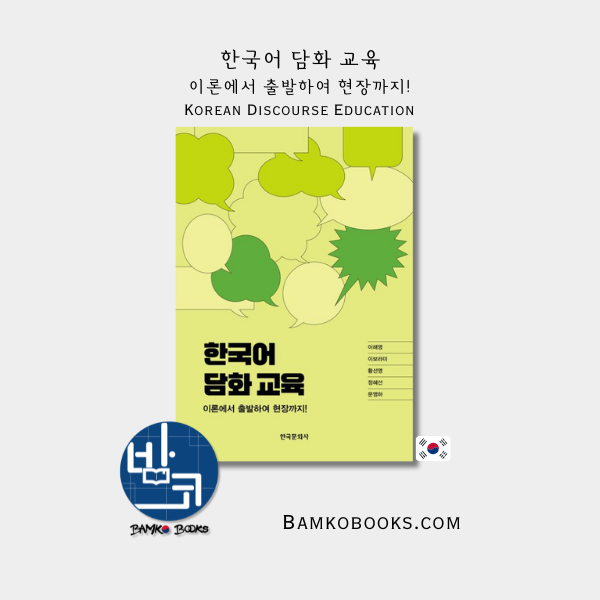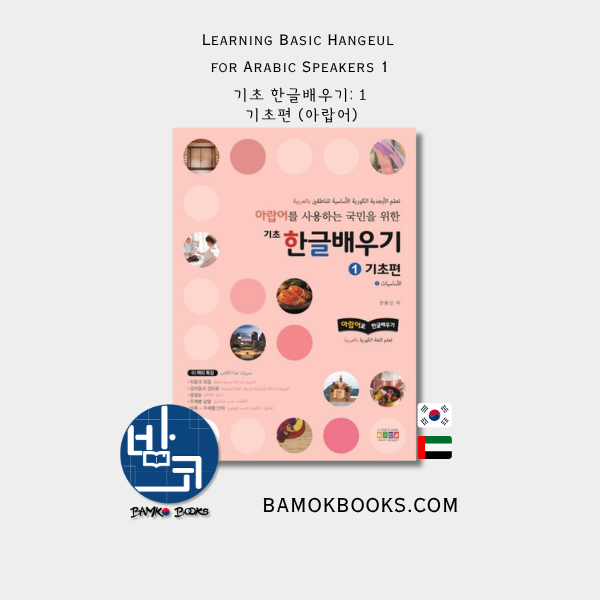<KR>
외국인들이 감칠맛 나는 한국어 표현을 알고 미묘한 뉘앙스를 살려 글을 쓰고 대화를 나누는 모습을 보면, 외국인 제자를 가르치고 교수를 길러낸 지 25년이 흐른 지금도 깜짝 놀랄 때가 있다. 단순한 한류 소비를 넘어 미래의 한국 전문가로 성장하려는 학습자들이 늘어나면서 한국어 교실은 변화하고 있다.
의사소통에 성공하려면 발음이나 억양, 어휘와 문법도 알아야 하지만, 겉으로 드러나지 않은 속뜻을 파악하고 한국어에 담긴 사회 문화적 정보도 이해해야 한다. 또한 상대방을 이해시키고 자신의 의도를 정확하게 잘 전달하려면 논리적이고 설득력 있는 말과 글을 구사할 수 있어야 한다.
2000년 이화여대에 부임한 이후, 한국어교육 전공생을 지도하며 가장 오랫동안 연구하고 강의해 온 주제 중 하나가 ‘한국어 담화 교육’이었는데, 학습 수요의 변화를 마주한 요즘에 더욱 관심이 집중되는 주제다. 그러나 실제 강의에서 한국어 담화를 분석하고 이를 한국어교육에 적용할 수 있는 통찰을 제공하는 교재는 없었다. 결국, 다른 언어 교육 분야의 서적을 참고하여 이를 한국어교육에 적용하는 방식으로 강의를 진행할 수밖에 없었다.
이에 제자 교수들의 도움을 받아 3년간의 강의를 녹화하고 정리하며 ‘이해영 교수의 강의 읽기’라는 책을 기획하게 되었다. 필자의 담화 수업을 들으며 논문을 쓴 제자들과 함께 이 책을 집필하였고, 강의의 생생함을 담기 위해 실제 강의 내용을 녹음해 반영하기도 했다. 이를 통해 강의실 밖의 해외 연구자들과도 한국어 담화분석과 교육 적용 방안에 대하여 함께 고민할 수 있을 것이라는 기대에 들떴다.
그러나 3년간 세종학당재단 이사장직을 수행하면서 계획은 잠시 멈추었다. 뜻하지 않은 중단이었지만, 오히려 이를 계기로 더욱 깊이 있는 고민을 할 수 있었고, 최신 연구 동향도 반영할 수 있었다. 물론, 준비 기간이 길어지면서 초기 구상과 달라진 부분도 있고, 여러 차례의 수정 과정에서 담화의 전체적 흐름이 잘 전달되고 있는지에 대한 고민도 남아 있다.
이 책을 집필하며 필자는 담화를 담화답게 만드는 것이 무엇인지, 그리고 그것이 어떻게 한국어 교실에 적용되어야 하는지 다시금 깊이 탐구할 기회를 얻었다. 언어는 단순한 의사소통의 도구를 넘어, 이해와 연결, 문화적 풍요로움을 경험하는 관문이다. 특히, 담화를 깊이 이해할 때 이러한 풍요로움은 더욱 커진다.
이 책은 담화 연구와 교육에 실질적인 도움을 주기 위해 구성되었다. 문법, 어휘, 운율이 실제 의사소통에서 어떻게 기능하는지를 살펴보는 것에서 출발하여, 구어와 문어의 차이, 장르와 문체, 비교문화적 관점에서 한국어 담화를 다루었다. 한국어교육 현장에 적용 가능하도록 각 장의 끝에 ‘한국어교육에 적용해 보기’를 두었으며, 또한 심화 학습을 원하는 독자를 위한 길잡이 역할을 할 수 있도록 책의 마지막 장에는 담화 연구의 학문적 배경을 정리하여 두었다.
한국어를 가르친다는 것은 어떤 의미를 가질까? 수많은 외국인을 만나 한국어를 알리고 가르치면서 깨달은 것은, 그들이 한국어를 통해 미래를 꿈꾸기 시작했다는 점이다. 특히, 세종학당재단 이사장으로 지낸 지난 3년 동안 전 세계의 많은 학습자를 보며 그들의 꿈을 더욱 실감할 수 있었다. 꿈을 향해 나아가는 과정에서 생생한 한국어를 배우는 것은 학습자들에게 든든한 동반자가 되어 줄 것이다. 아마도 이 책의 저자들이 ‘담화’에 관심을 가지게 된 것도, 살아 있는 한국어, 그리고 한국인의 마음이 담긴 언어를 전하고 싶다는 열망 때문이 아닐까.
이 책을 손에 든 독자들도 복잡한 문법과 풍부한 어휘를 넘어서, 학습자들이 다양한 상황에서 효과적으로 자신을 표현할 수 있도록 돕고자 하는 꿈을 가지고 있을 것이다. 이 책이 그러한 뜻을 지닌 독자들에게 한국어교육과 담화분석 연구의 소중한 자양분이 되기를 바란다.
<ENG>
When you see foreigners writing and having conversations with subtle nuances, knowing Korean expressions, you are still surprised 25 years after teaching foreign disciples and training professors. The Korean language classroom is changing as more and more learners want to grow into future Korean professionals beyond simple Korean Wave consumption.
You need to understand your pronunciation, accent, vocabulary, and grammar in order to be able to communicate successfully, but you also need to understand the hidden meaning and social and cultural information contained in Korean. You also need to be able to speak logically and persuasively in order to understand the other person and convey your intentions accurately.
"Korean discourse education" has been one of the topics I have studied and lectured on for the longest time since I joined Ewha Womans University in 2000, and it is a topic that is becoming more focused on these days as we face changes in the demand for learning. However, there were no textbooks that analyzed Korean discourse in actual lectures and provided insight into how it could be applied to Korean language education. In the end, I had no choice but to conduct the lecture by referring to books in other language education fields and applying them to Korean language education.
With the help of my disciple professors, I recorded and organized three years of lectures and planned a book called Professor Lee Hae-young's Lecture Reading. While listening to my discourse class, I wrote this book with my disciples who wrote the thesis, and I recorded and reflected the actual contents of the lecture to capture the vividness of the lecture. Through this, I was excited that foreign researchers outside the classroom would be able to think about Korean discourse analysis and how to apply education together.
However, while serving as the chairman of the King Sejong Institute Foundation for three years, the plan stopped for a while. It was an unexpected suspension, but with this opportunity, I was able to think more in-depth and reflect the latest research trends. Of course, as the preparation period has lengthened, there are parts that have changed from the initial plan, and concerns about whether the overall flow of the discourse is well conveyed in the process of several revisions remain.
As I wrote this book, I was given the opportunity to delve deeply into what makes a discourse like a discourse and how it should be applied to Korean language classes. Language is a gateway to understanding, connection, and cultural enrichment beyond simple communication tools. This enrichment, in particular, increases when a discourse is deeply understood.
This book is designed to provide practical assistance in discourse research and education. Starting with examining how grammar, vocabulary, and rhyme function in real communication, Korean discourse was dealt with from the perspective of differences between spoken and written languages, genres and styles, and comparative cultures. To be applicable to the field of Korean language education, 'Applying to Korean language education' is placed at the end of each chapter, and the academic background of discourse research is summarized in the last chapter of the book so that it can serve as a guide for readers who want to learn in-depth.
What does it mean to teach Korean? What I realized as I met numerous foreigners, promoted and taught Korean is that they began to dream of the future through the Korean language. In particular, during the past three years as the chairman of the King Sejong Institute Foundation, I was able to realize their dreams more by seeing many learners around the world. Learning a vivid Korean language in the process of pursuing one's dream will be a strong partner for learners. Perhaps the authors of this book became interested in 'dialogue' because of their desire to convey a living Korean language and a language with Korean hearts.
Readers with this book may also have a dream to help learners express themselves effectively in various situations beyond complex grammar and rich vocabulary. I hope this book will be a valuable nourishment for Korean language education and discourse analysis research for readers who have such a meaning.
<FR>
Lorsque vous voyez des étrangers écrire et avoir des conversations avec des nuances subtiles, connaissant des expressions coréennes, vous êtes encore surpris 25 ans après avoir enseigné à des disciples étrangers et formé des professeurs. La classe de langue coréenne évolue à mesure que de plus en plus d'apprenants veulent devenir de futurs professionnels coréens au-delà de la simple consommation de la Vague Coréenne.
Vous devez comprendre votre prononciation, votre accent, votre vocabulaire et votre grammaire pour pouvoir communiquer avec succès, mais vous devez aussi comprendre le sens caché et l'information sociale et culturelle du coréen. Vous devez aussi être capable de parler de façon logique et persuasive afin de comprendre l'autre personne et de communiquer vos intentions avec précision.
"L'éducation au discours coréen" est l'un des sujets que j'ai étudiés et sur lesquels j'ai donné des conférences depuis longtemps depuis mon entrée à l'université Ewa Woman en 2000, et c'est un sujet qui se concentre de plus en plus sur ces jours-ci alors que nous faisons face à des changements dans la demande d'apprentissage. Toutefois, aucun manuel n'a analysé le discours coréen dans les conférences et donné un aperçu de la façon dont il pourrait être appliqué à l'enseignement de la langue coréenne. En fin de compte, je n'ai eu d'autre choix que d'organiser la conférence en faisant référence à des livres dans d'autres domaines de l'enseignement des langues et en les appliquant à l'enseignement de la langue coréenne.
Avec l'aide de mes professeurs disciples, j'ai enregistré et organisé trois années de conférences et j'ai planifié un livre intitulé Lecture de conférences du professeur Lee Hae-young. En écoutant mon cours de discours, j'ai écrit ce livre avec mes disciples qui ont écrit la thèse, et j'ai enregistré et reflété le contenu réel de la conférence pour saisir la vivacité de la conférence. Par ce biais, j'étais enthousiaste à l'idée que des chercheurs étrangers en dehors de la salle de classe pourraient réfléchir à l'analyse du discours coréen et à la façon d'appliquer l'éducation ensemble.
Cependant, alors qu'il était président de la King Sejong Institute Foundation pendant trois ans, le plan s'est arrêté pendant un certain temps. Il s'agissait d'une suspension inattendue, mais avec cette occasion, j'ai pu réfléchir plus en profondeur et refléter les dernières tendances en matière de recherche. Bien entendu, à mesure que la période de préparation s'est allongée, certaines parties ont changé par rapport au plan initial, et des préoccupations subsistent quant à savoir si le déroulement global du discours est bien exprimé dans le processus de plusieurs révisions.
En écrivant ce livre, j'ai eu l'occasion d'approfondir ce qui fait un discours comme un discours et comment il devrait être appliqué aux cours de coréen. La langue est une passerelle vers la compréhension, la connexion et l'enrichissement culturel au-delà des simples outils de communication. Cet enrichissement, en particulier, s'accroît lorsqu'un discours est profondément compris.
Cet ouvrage est conçu pour fournir une aide pratique à la recherche et à l'éducation sur le discours. En commençant par examiner le fonctionnement de la grammaire, du vocabulaire et des rimes dans la communication réelle, le discours coréen a été traité du point de vue des différences entre les langues parlées et écrites, les genres et les styles.
목차
프롤로그
1장:담화의 세계로 들어온 한국어 교실담화에서 찾은 문제 해결의 실마리
1.1. 문장을 넘어서, 담화로!
1.2. 연구자들이 바라본 담화
1.3. 한국어 교실에서의 담화 교육
2장:한국어교육에서의 응집성과 응결성응집성과 응결성의 팀워크, 담화와 텍스트를 만들다.
2.1. 말과 글, 그 속에 있는 무엇!
2.2. 그것은 바로 텍스트성
2.3. 학습자의 말과 글
2.4. 담화 속 강한 결속
2.5. 한국어교육에 적용해 보기
3장:담화에서 문법의 기능과 교육문장 내에서 해결되지 않는 한국어 문법적 문제, 담화 차원에서 풀어보자!
3.1. 담화에서도 문법에 관심을 가지는 이유
3.2. 결속의 귀재, 문법적 장치들
3.3. 한국어교육에 적용해 보기
4장:담화에서 어휘의 기능과 교육한국어 담화에서 활약하는 어휘의 새로운 모습을 발견하다.
4.1. 담화에서 어휘에 관심을 가지는 이유
4.2. 담화를 담화답게! 응결장치로 기능하는 어휘
4.3. 어휘가 보내는 신호, 담화 파악의 길잡이
4.4. 구어와 문어의 어휘 밀도 차이
4.5. 한국어교육에 적용해 보기
5장:담화에서 운율의 기능과 교육한국어 담화에서 기능하는 운율적 현상에 주목하자!
5.1. 담화에서 운율에 관심을 가지는 이유
5.2. 담화를 담화답게! 운율의 담화적 기능
5.3. 한국어교육에 적용해 보기
6장:한국어 담화표지와 유창성 교육한국어를 더 맛깔스럽고, 감칠맛 나게
6.1. 담화의 완성은 담화표지 사용으로
6.2. 담화표지의 발견
6.3. 담화표지 사용과 유창성
6.4. 한국어교육에 적용해 보기
7장:한국어 구어 담화와 구어 학습구어를 알면 보인다! 생생한 말하기의 기술!
7.1. 진짜 구어? 가짜 구어?
7.2. 학습자의 고민거리, 구어
7.3. 한국어 구어 담화의 특징과 유형
7.4. 한국어교육에 적용해 보기
8장:한국어 텍스트와 문어 학습문어의 특징을 알면 쓰기가 술술! 읽기가 척척!
8.1. 글 같은 글, 글 같지 않은 글
8.2. 학습자의 고민거리, 글쓰기
8.3. 한국어 텍스트의 특징과 유형
8.4. 한국어교육에 적용해 보기
9장:한국어 담화의 구성과 교육더 큰 유형의 담화 구조까지
9.1. 담화 구조, 의사소통의 시작
9.2. 정보 배치, 화제 전개의 시작
9.3. 더 큰 유형의 정보 배치
9.4. 대화의 상호작용 구조
9.5. 술술 말하기, 내러티브의 구조
9.6. 한국어교육에 적용해 보기
10장:한국어 담화의 장르와 문체, 그리고 교육구어와 문어의 구분 그 너머
10.1. 담화와 텍스트의 다양한 모습
10.2. 장르와 언어㈔용역
10.3. 문체와 틀 전환
10.4. 한국어교육에 적용해 보기
11장:한국어 담화 교육과 문화담화 구성 방식에도 문화가 보인다!
11.1. 담화 속에 문화가!
11.2. 문화 차이가 가져온 담화 구성의 차이
11.3. 한국어교육에 적용해 보기
12장:깊고 넓은 담화의 세계, 갈무리와 시작담화 교육에 앞서, 다양한 학문적 담론을 돌아보자.
12.1. 되돌아보기의 중요성
12.2. 담화 탐구의 갈무리, 그러나 끝나지 않은 이야기
12.3. 한국어 교실로!



































